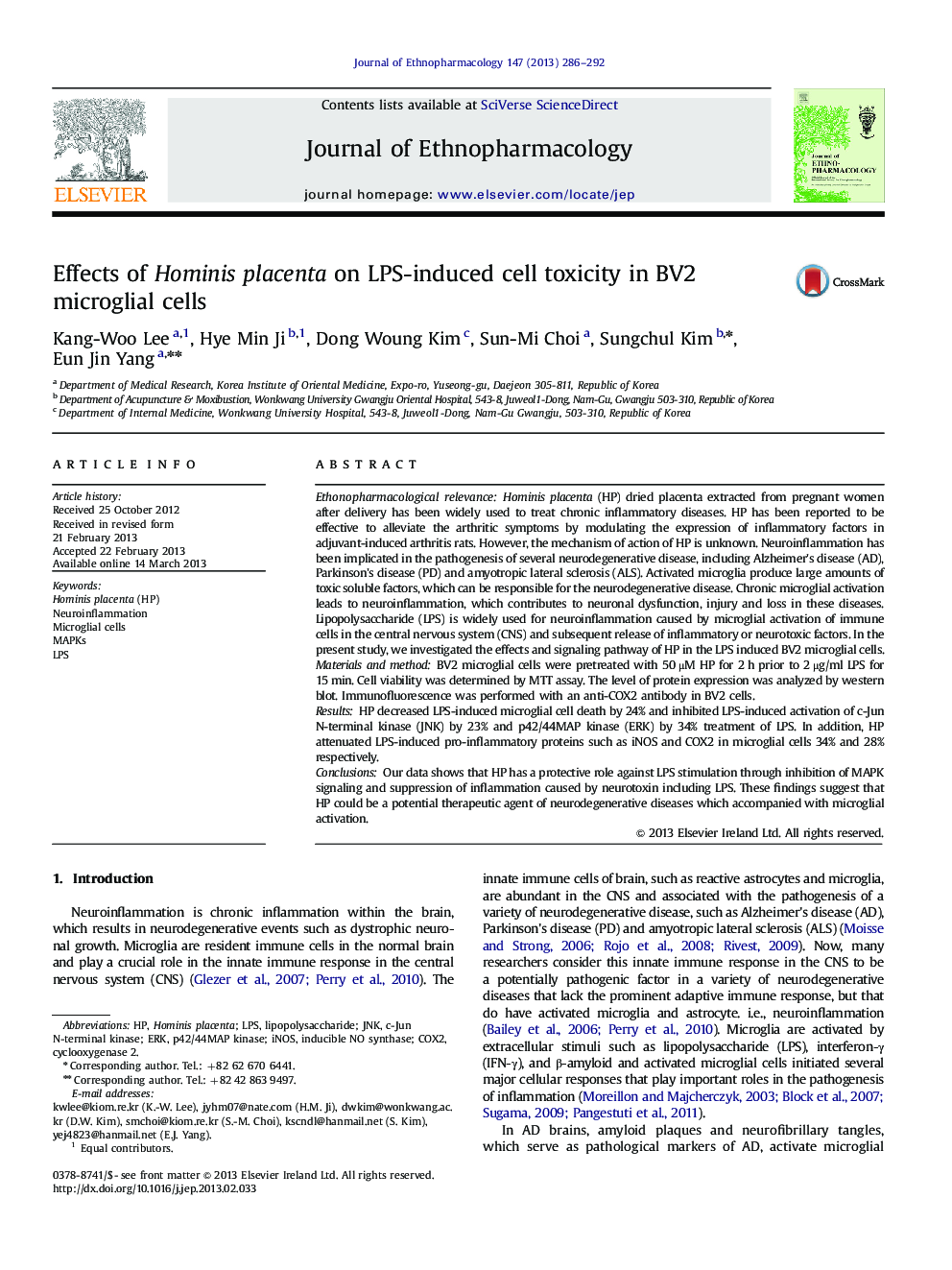| کد مقاله | کد نشریه | سال انتشار | مقاله انگلیسی | نسخه تمام متن |
|---|---|---|---|---|
| 5837307 | 1123965 | 2013 | 7 صفحه PDF | دانلود رایگان |

Ethonopharmacological relevanceHominis placenta (HP) dried placenta extracted from pregnant women after delivery has been widely used to treat chronic inflammatory diseases. HP has been reported to be effective to alleviate the arthritic symptoms by modulating the expression of inflammatory factors in adjuvant-induced arthritis rats. However, the mechanism of action of HP is unknown. Neuroinflammation has been implicated in the pathogenesis of several neurodegenerative disease, including Alzheimer's disease (AD), Parkinson's disease (PD) and amyotropic lateral sclerosis (ALS). Activated microglia produce large amounts of toxic soluble factors, which can be responsible for the neurodegenerative disease. Chronic microglial activation leads to neuroinflammation, which contributes to neuronal dysfunction, injury and loss in these diseases. Lipopolysaccharide (LPS) is widely used for neuroinflammation caused by microglial activation of immune cells in the central nervous system (CNS) and subsequent release of inflammatory or neurotoxic factors. In the present study, we investigated the effects and signaling pathway of HP in the LPS induced BV2 microglial cells.Materials and methodBV2 microglial cells were pretreated with 50 μM HP for 2 h prior to 2 μg/ml LPS for 15 min. Cell viability was determined by MTT assay. The level of protein expression was analyzed by western blot. Immunofluorescence was performed with an anti-COX2 antibody in BV2 cells.ResultsHP decreased LPS-induced microglial cell death by 24% and inhibited LPS-induced activation of c-Jun N-terminal kinase (JNK) by 23% and p42/44MAP kinase (ERK) by 34% treatment of LPS. In addition, HP attenuated LPS-induced pro-inflammatory proteins such as iNOS and COX2 in microglial cells 34% and 28% respectively.ConclusionsOur data shows that HP has a protective role against LPS stimulation through inhibition of MAPK signaling and suppression of inflammation caused by neurotoxin including LPS. These findings suggest that HP could be a potential therapeutic agent of neurodegenerative diseases which accompanied with microglial activation.
Graphical Abstract77
Journal: Journal of Ethnopharmacology - Volume 147, Issue 2, 20 May 2013, Pages 286-292